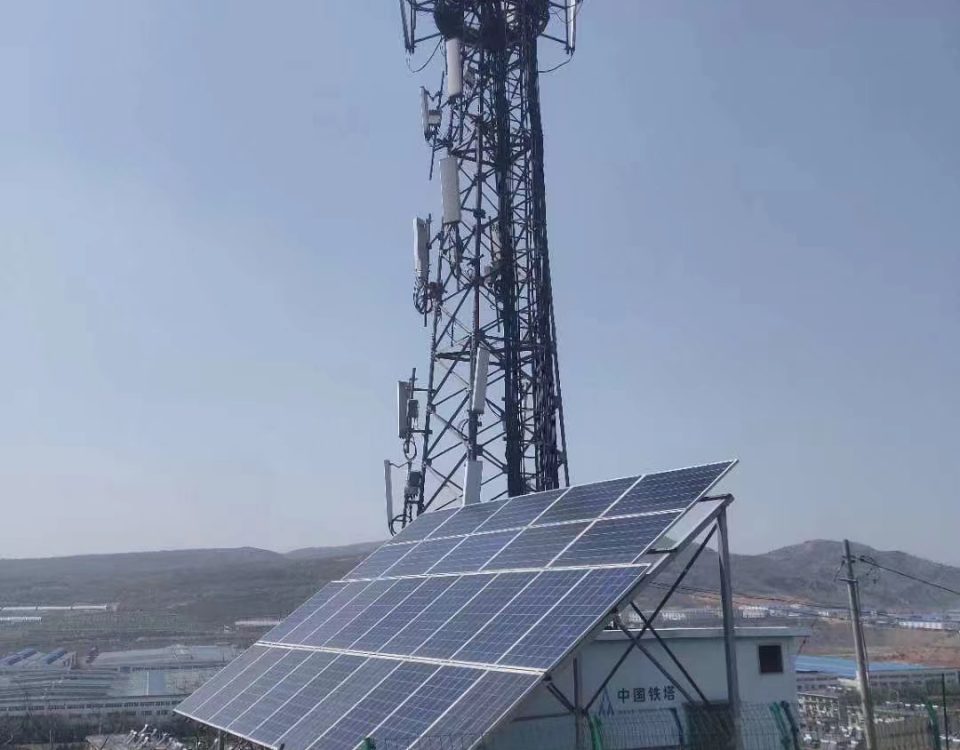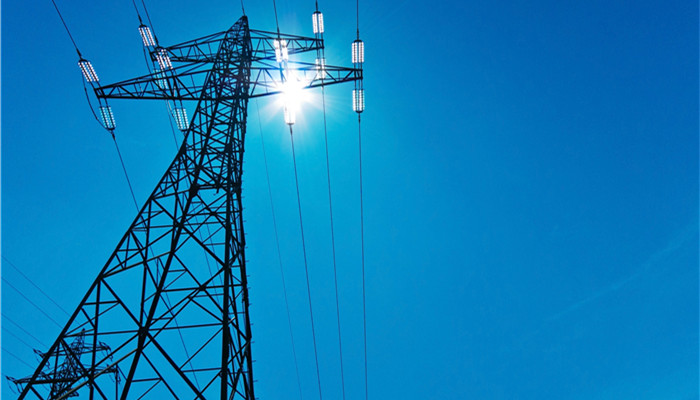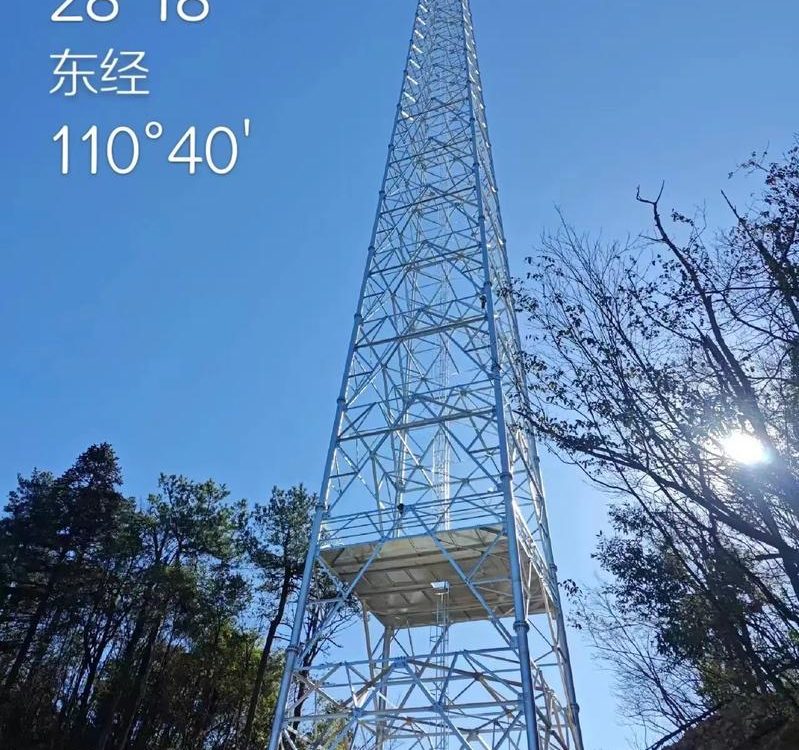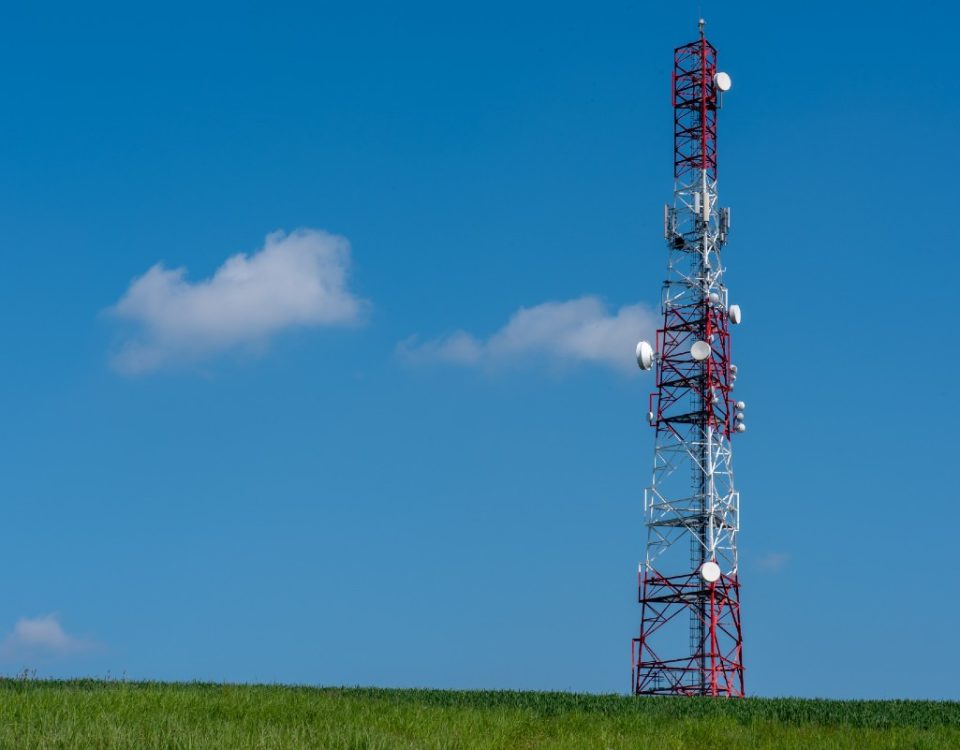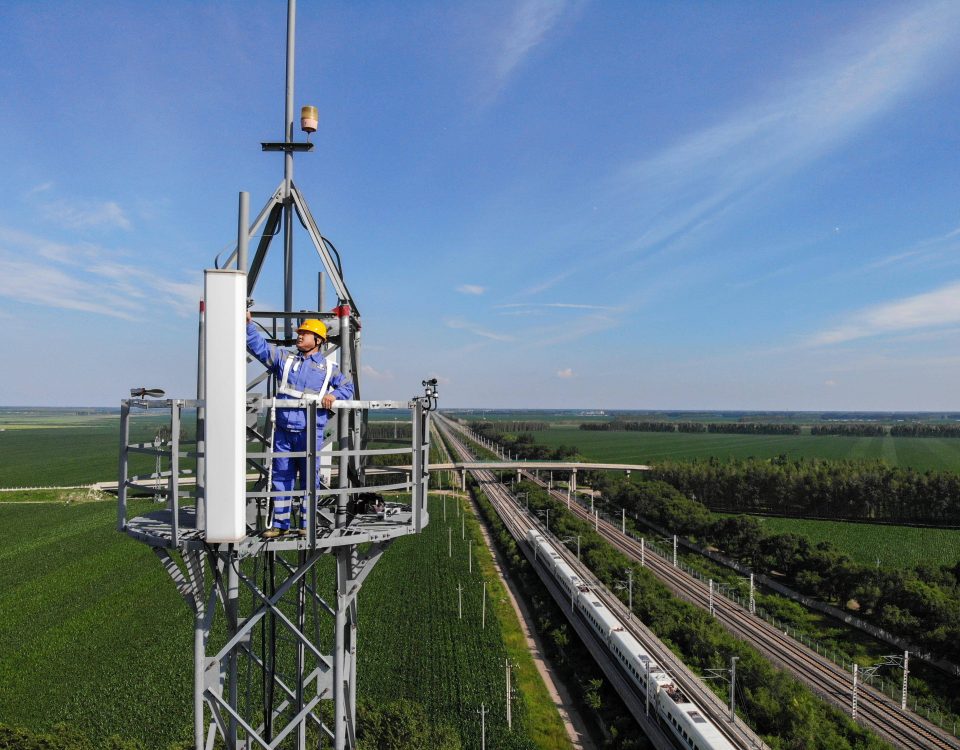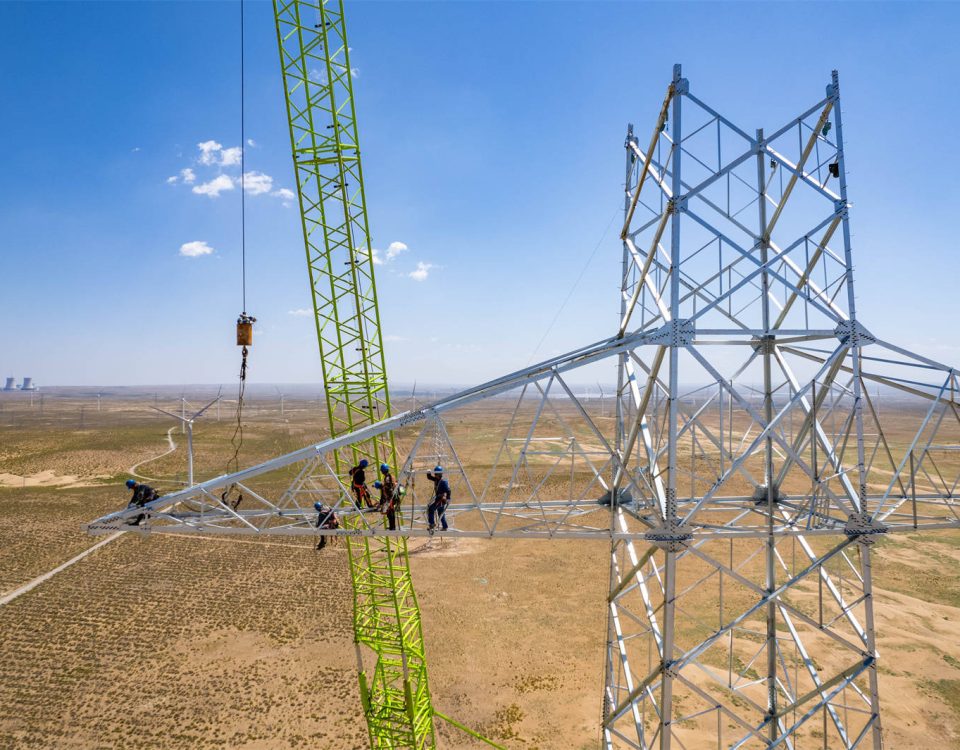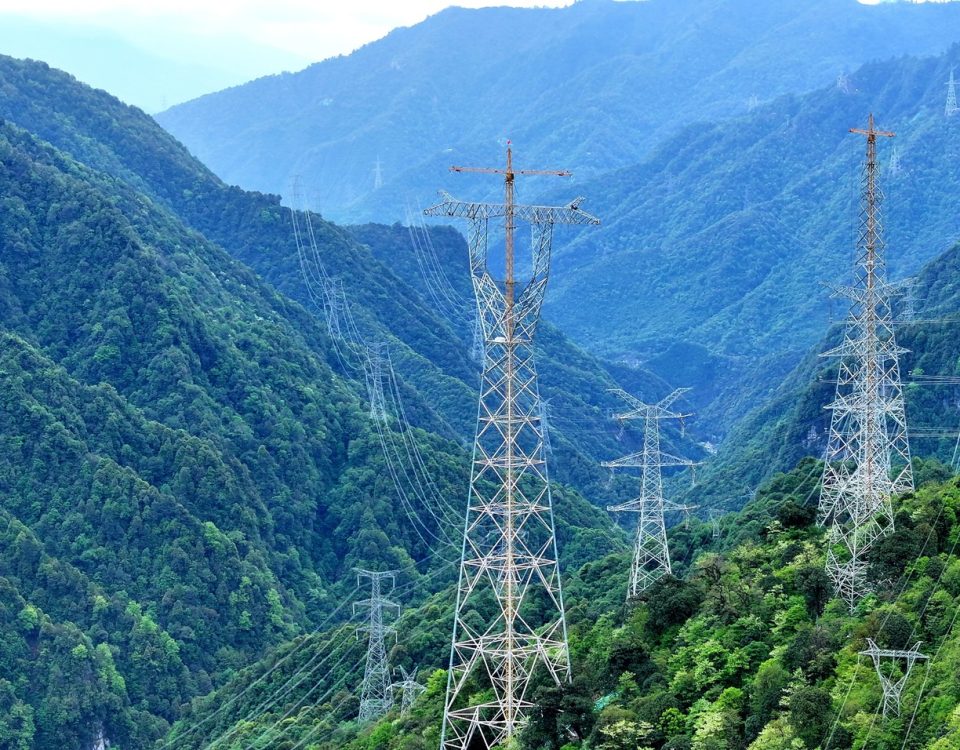
Communication Steel Tower Design and Production Process
February 9, 2024
132kV Galvanized Steel Power Transmission Tower
May 24, 2024Communication tower foundation selection and design
0 Introduction
The communication tower is a tall structure equipped with communication antennas. It is characterized by a tall structure and a relatively small cross-section. The lateral load (mainly wind load and earthquake action) plays a major role. The communication tower foundation safely and reliably transfers all the loads of the superstructure to the foundation and ensures the overall stability of the structure. It is an important part of the communication tower structure. The selection of communication tower foundation is closely related to the superstructure form, structural layout, external load category, construction site and geological conditions of the area. Reasonable foundation selection and design are crucial to reducing project costs, shortening project construction cycles, and ensuring structural safety and reliability. ( Refer to ” Architecture Chinese Network ” )
Since wind load is a random load, the magnitude and direction of wind force are arbitrary and pulsating, and the foundation stress also has arbitrary and pulsating characteristics, so when selecting load values for foundation design, It is necessary to select the standard value of the load combination in the most unfavorable direction according to different tower forms for design. The space truss structure used in communication towers has a relatively light weight, and the vertical load of the platform on which communication antennas are hung is not large. Therefore, the tension or pressure on the top surface of the foundation under a triangular or quadrilateral truss tower is alternating, and the tension value can generally reach Above the pressure value, the foundation pullout calculation of the truss tower is particularly important. In many cases, the foundation pullout design plays a leading role.
According to the foundation design of two types of towers commonly used in the construction of communication base stations in Hebei China Unicom in recent years, the author briefly analyzes how to select and design tower foundations for four-corner towers and three-tube towers.
1. Basic selection and design of quadrilateral angle steel tower.
Quadrilateral angle steel tower, referred to as quadrilateral tower, is a common form of communication tower in recent years. The height of the tower is generally about 1/7 of the height of the tower. The foundation form usually adopts reinforced concrete independent foundation and cast-in-place pile foundation. Calculate the load combination selected for the foundation. Generally, the load combination from the upper structure to the foot of the tower is the most unfavorable direction (i.e. 45° angle direction), the standard combination load of load effects in the normal service limit state includes downward pressure, uplift force and horizontal shear force. The foundation form must be based on the geotechnical engineering survey report of the location of the base station and the conditions of surrounding buildings and site. Comprehensive selection based on flatness, etc.
1.1 Reinforced concrete independent foundation
This type of foundation is suitable for situations where the bearing capacity of the foundation bearing layer is good, the characteristic value of the bearing capacity of the general foundation bearing soil layer is greater than 80 kPa, and the soil quality is relatively uniform. Its advantages are simple construction , low investment cost and fast construction speed. The column feet of the tower body are generally hinged with the foundation column piers. At the same time, the components connected to the column feet are also inclined rods. The axial force (pressure or tension) in the column and the axial force (pressure or tension) in the inclined rod are constructed through the column feet. Passed to pier. On the one hand, the column piers transmit the vertical force from the superstructure to the base. At the same time, the column piers and the independent foundation also jointly bear the horizontal force transmitted from the superstructure. Connecting beams are set up between independent foundations. Connecting beams can balance most of the horizontal force components transmitted from columns and diagonal bars. The horizontal force accumulated only by wind load cannot be balanced by connecting beams and must be borne by column piers. After designing the coupling beams, the maximum horizontal force borne by most foundation column piers is about 1/3 of that without coupling beams, so the setting of coupling beams is very necessary.
Taking Hebei China Unicom Qinghe Xujiage Base Station as an example, it has a 52 m angle steel tower with a heel opening of 7 m It is about 5 m deep, with layer ③ of silt soil. The soil in this layer is exposed to a depth of 7 m. No groundwater is found within the survey depth range. The area where the base station is located is relatively open, and there are no restrictions on foundation pit excavation. It is appropriate to use an independent foundation, with the ③ layer of silty clay as the base bearing layer. The foundation bearing capacity characteristic value is fak = 120 kPa. After compression and pullout resistance calculations, The foundation adopts 3 m×3 m and the burial depth is 3 m, which can meet the requirements. In this case, the bearing capacity of the bearing layer is better, and the size of the foundation is controlled by the pullout resistance. In addition, if the bearing capacity of the foundation bearing layer is small, the bottom area of the foundation can be expanded without increasing the burial depth to reduce the self-weight of the foundation and meet the compression requirements of the foundation bearing capacity. In this case, the size of the foundation is determined by the resistance of the foundation. pressure control. Taking Hebei China Unicom’s Wangguanzhuang Village base station in Huanghua City as an example, it has a 52 m angle steel tower with a heel opening of 7 m The burial depth is about 5 m, and groundwater is weakly corrosive to concrete. The groundwater of this base station is shallow, and the foundation pit excavation should not be too deep, otherwise precipitation will be required, which will increase the construction cost and difficulty. It is advisable to use an independent foundation, with the ① layer of silt as the base bearing layer, and the foundation bearing capacity characteristic value is fak=90 kPa for compression calculation, the foundation is 3. 4 m × 3. 4 m and the burial depth is 2. 5 m, which can meet the compression requirements. In order to facilitate the construction of the cushion layer, 0. 2 m thick graded gravel can be placed on the base, and each side is 0. 15 m wider than the foundation edge. Since groundwater is weakly corrosive to concrete, slag Portland cement should be used when mixing concrete in this base station.
1.2 Reinforced concrete cast-in-place pile foundation
When the soft soil layer on the surface of the site foundation is thick, or the groundwater is shallow and precipitation is difficult, and the upper load is large and concentrated, the shallow foundation used for the tower structure foundation can no longer meet the foundation bearing capacity and deformation requirements. According to the requirements, a pile foundation is used to transfer the load to the deep hard bearing layer through the piles. The pile foundation has high bearing capacity, good stability, small settlement, and can effectively resist horizontal loads and uplift forces.
According to the load conditions and engineering geological conditions, reinforced concrete prefabricated piles, bored piles, artificially dug cast-in-place piles, steel pipe piles and other pile types can be selected. Take the base station of Yangjiabo Village, Huanggezhuang Town, Fengnan District, Tangshan Unicom as an example: a 57m angle steel tower with an opening of 7.9m×7.9m. The geological conditions are shown in Table 1.

The groundwater of this base station is shallow, and the bearing capacity of the silty clay in the ② layer is low. Taking a pile with a diameter of 0.9 m at the foot of each tower as an example, the net length of the pile is 14.4 m, and the fine sand in the ⑥ layer is about 1 m , one column and one pile are used, and tension beams are set between piles, so that the cap platform is 1 m × 1 m, which saves the amount of concrete. If two piles are used, such as two piles with a diameter of 0. 6 m, the minimum cap must be 1. 4 m × 4. 0 m, which will bring great inconvenience to the construction, increase investment, and long construction period. When determining the pile foundation plan, it is necessary to design a reasonable pile diameter and number of piles based on the geotechnical engineering survey report, so that it is neither wasteful nor safe and reliable, so as to achieve the optimal design purpose.
2. Basic selection and design of the triangular steel tube tower.
The tower columns of the triangular steel tube tower are made of steel pipes. The gyration radius of the steel pipes in each direction is the same, which meets the stress requirements of the tower. The planar form is made into an equilateral triangle, which is usually called a three-tube tower. . Since the four-corner tower occupies a large area, its construction in the city is greatly affected by the site. Therefore, in order to save land, it is very common to use three-tube towers in the design of communication towers in recent years. The three-tube tower has a small heel opening and a small tower column slope, so the tensile stress under each tower column is relatively large. The foundation form can be based on the geotechnical engineering survey report of the base station and the local site conditions, using a reinforced concrete raft overall foundation. Or use pile foundation.
2.1 Reinforced concrete raft overall foundation
Since the heel opening of the triangular steel tube tower (three-tube tower) is generally not too large, the weight of the tower is small, but because the iron tower is tall, the bending moment and horizontal force of the tower body are large. Therefore, the overall raft foundation is often used. The slab foundation is a flexible foundation. Since the base plate is equipped with steel bars to withstand the bending moment and shear force caused by the foundation reaction force, any section of the overhanging part of the base plate has sufficient strength, and it is not limited by the rigid angle, so The thickness of the base plate can be smaller, while the size of the overhang can be larger to resist bending moments. This type of foundation form is suitable for sites with relatively open spaces, where excavation of foundation pits is not restricted, groundwater is buried deep, and the bearing capacity of the bearing layer should not be less than 110 kPa.
Its advantages are fast construction speed and low cost. It is generally completed with one-time pouring of commercial concrete, which is not prone to quality problems and has strong integrity.
Taking the Dongzhang Village base station in Xinle City, Hebei Telecom as an example, the 47m angle steel tower has a heel opening of 3.65m×3.65m×3.65m. The geological conditions are described as follows: ① layer of silty clay, the bottom depth of the layer is about 5 m, and the foundation bearing capacity Characteristic value fak = 120 kPa, ② layer of silt soil, foundation bearing capacity characteristic value fak = 90 kPa, soil exposure depth of this layer is 7 m, the area where this base station is located is relatively open, and foundation pit excavation is not restricted, so raft foundation should be used , use the ① layer of silty clay as the base supporting layer, use a circular foundation with a diameter of 7.2 m, a maximum compressive stress of the base of 107 kPa, a minimum compressive stress of 5 kPa, and conduct a weak underlying layer check for the ② layer of silt. , to meet the compressive bearing capacity requirements.
2.2 Reinforced concrete cast-in-place pile foundation
When the soft soil layer on the surface of the site foundation is thick, or the groundwater is shallow, using pile foundation can effectively resist vertical loads and uplift forces.
According to the engineering geological conditions, reinforced concrete bored piles are generally used. One pile under each tower column, or two piles under one tower column, which needs to be determined according to calculations. Taking the South Circle base station of Hugezhuang Town, Luannan County, Tangshan China Unicom as an example: a 42 m three-tube tower with a follow-up opening of 3. 3 m × 3. 3 m × 3. 3 m. The geological conditions are shown in Table 2.
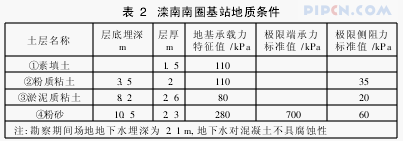
The underground water of this base station is relatively shallow. Take a pile with a diameter of 0.9 m at the foot of each tower as an example. The pile has a net length of 11m and enters the ⑥ layer of silt for about 1m. One column and one pile are used, and tensioning is set between the piles. The beam and cap platform are 1 m×1 m, the standard value of the compressive ultimate bearing capacity of a single pile is 1 637 kN, and the standard value of the ultimate pull-out bearing capacity is 734 kN, which meets the design requirements.
3 Conclusion
Through the above example analysis of foundation design, no matter what type of tower it is, it must be analyzed based on the geotechnical engineering survey report and site conditions to determine the foundation form. When the construction site is located in a place with better geological conditions, try to design In the form of an independent shallow foundation, the foundation investment is also more economical; when the bearing capacity of the bearing layer of the construction site is low, or the groundwater is shallow, try to design a deep foundation, but the construction investment will be relatively large.




